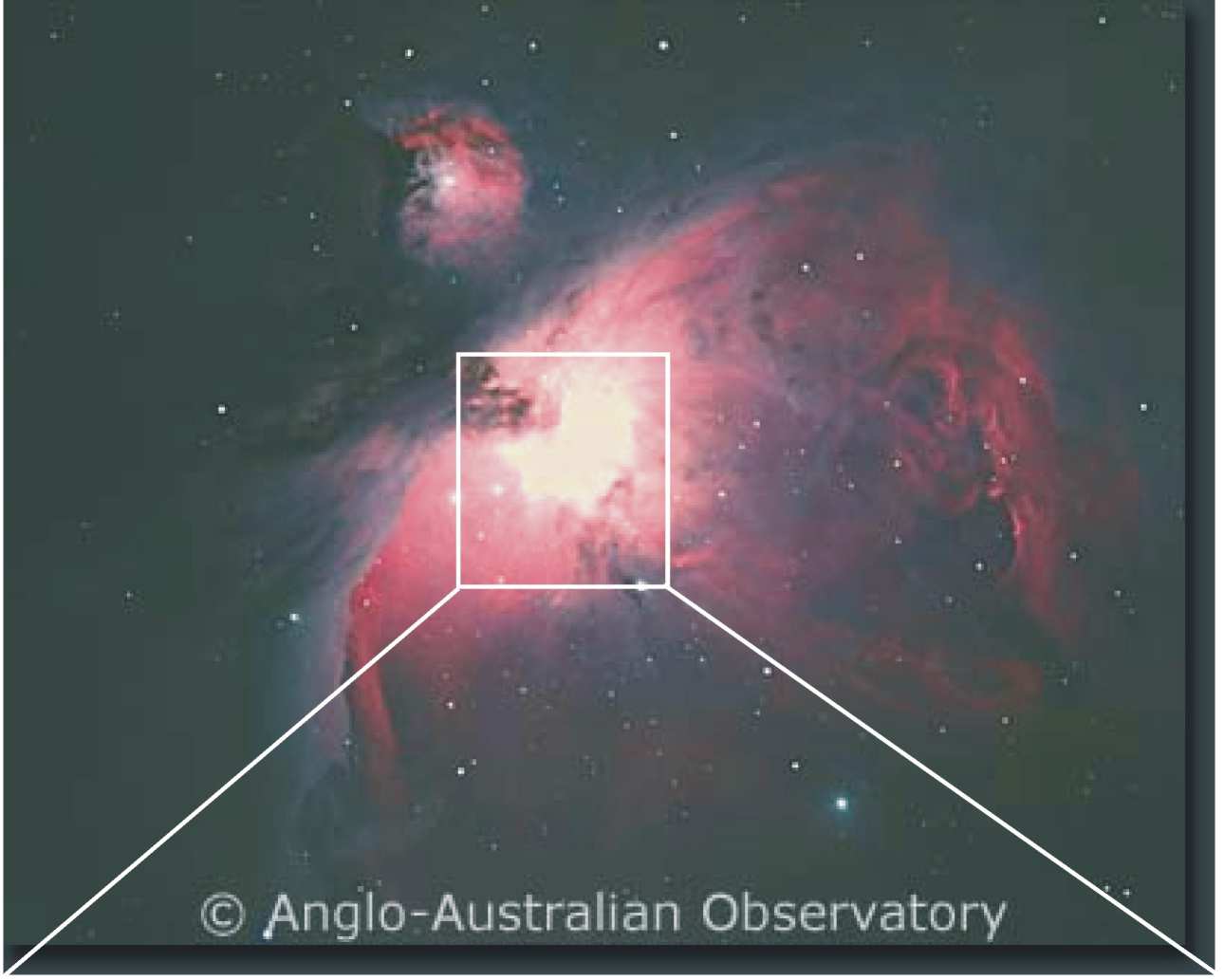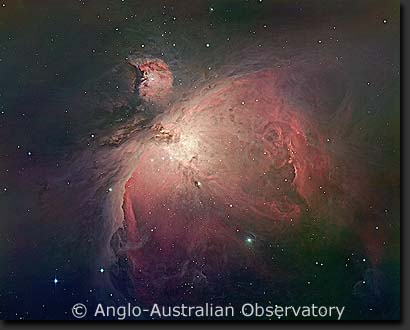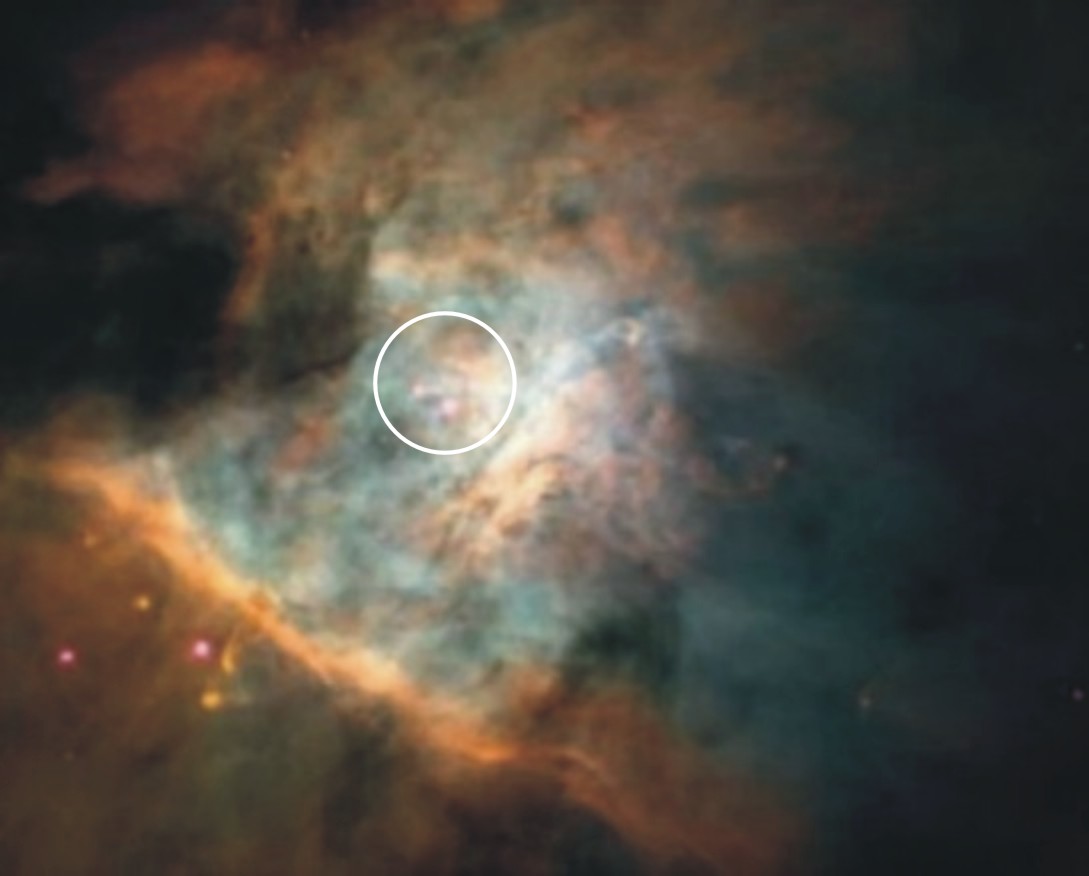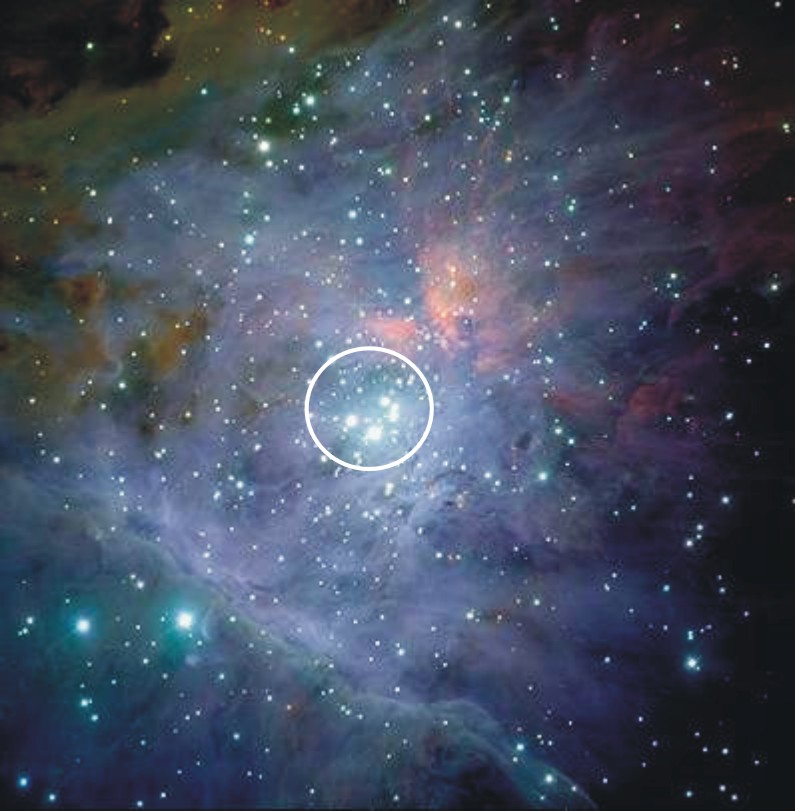 |

Hooke's Telescopes and the Orion Nebula | ||
| The Orion nebula is about 1500 light years away and can be seen with the naked eye in the 'sword' below the three stars of Orion's belt. | ||
| This nebula is one of the nearest stellar nurseries where, under the relentless pull of gravity, stars are forming from interstellar material. | ||
| Hooke used a star in this nebula to test the quality of his telescopes. |
| The two top panels show a wide-angle view of the nebula and span roughly twice the angular size of the Moon. | ||
| (a) the light from the nebula completely dominates the famous 'Trapezium' of four stars that power the nebula. | (b) a high-pass filtered version of (a) revealing far more detail. (Note 1) | |
 |
 | |
 |
 | |
| (c) more detailed image taken by the Hubble Space Telescope. This image covers roughly the region marked by the rectangle in (a). (Note 2) | (d) An infrared image of roughly the same region as (c) reveals clearly the four central stars with the fifth to the NW. (Note 3) | |
| Hooke used the visibility of the fifth star as a measure of the quality of his telescopes. Viewing through his telescope, the glare of the nebula emission would not appear as intense as in the photographs above. Nevertheless, the visibility of the fifth star was a good indication of the optical quality of Hooke's instruments. | ||
|
Note 1: (a) and (b) courtesy of David Malin (Anglo-Australian
Observatory). Note 2: (c) HST image courtesy of C. R. O'Dell (NASA and Vanderbilt University). Note 3: (d) taken with the Very Large Telescope of the European Southern Observatory courtesy of Mark McCaughrean (AIP, Potsdam). | ||
Roger Davies
Philip Wetton Professor of Astrophysics.